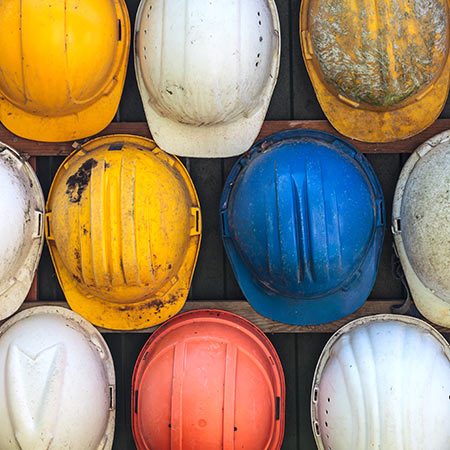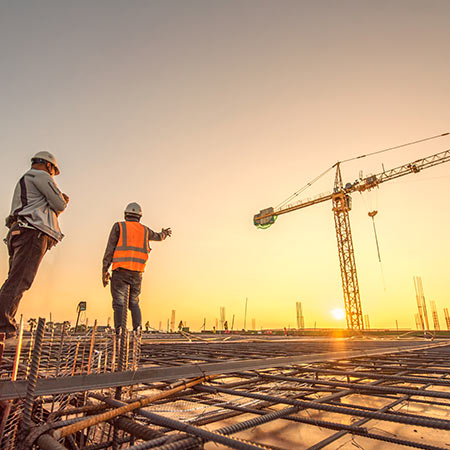
|
Three private measures of recent and expected nonresidential construction activity were negative in July. In contrast, Census Bureau data signaled a strong rebound in residential starts and permits. Total construction starts (dollars) fell 7% from June to July at a seasonally adjusted annual rate, Dodge Data & Analytics reported on Monday. “The decline was due to a significant pullback in the nonbuilding segment, which fell 31% from June to July. Nonresidential building starts rose 3% while residential building starts increased 2%. Year-to-date through seven months, starts were 15% down from the same period in 2019. Nonresidential starts plummeted 25%, nonbuilding starts dropped 20%, and residential starts slipped 4%.” Chief Economist Richard Branch commented, “the gain in nonresidential building starts was entirely due to strength in the Northeast and West regions, with starts in the South Atlantic and South Central regions down sharply during the month. While one month doesn’t constitute a trend, the potential risk to construction from the rising number of COVID cases in these regio ns is significant.” Construction starts (dollars) tumbled 36% year-over-year (y/y) from July 2019 to July 2020 and 20% year-to-date, data firm ConstructConnect reported on Friday. “July 2020 nonresidential starts versus July 2019 were a jaw-dropping -44%....In 2020 year-to-date starts, the privately-financed categories of construction have been weakest—commercial, at -34.6%, and industrial, -77.5%--while public/government works have fallen into shallower pits—institutional, -15.0%, and engineering, -9.4%.” ConstructConnect’s total residential starts in July were -21% y/y and -11% year-to-date. Multiunit starts were -34% y/y and -22% year-to-date. Single-family starts were -16% y/y and -6.2% year-to-date. The Architecture Billings Index (ABI) was unchanged from June to July, with a reading of 40.0, the American Institute of Architects reported on Wednesday. AIA says, “The ABI serves as a leading economic indicator that leads nonresidential construction activity by approximately 9-12 months.” The ABI is derived from the share of responding architecture firms that reported a gain in billings over the previous month less the share reporting a decrease in billings, presented as a score between 0 and 100. Any score below 50 means that firms with decreased billings outnumbered firms with increased billings. “Inquiries into new projects continued to show just a modest decline, but more seriously, the value of new signed design contracts slip ped from its June level.” ABI scores by practice specialty (based on three-month moving averages) all increased from June but remained below 50: residential (mostly multifamily), 47.5 (up from 45.7 in June); mixed, 44.0 (up from 38.1); institutional, 39.5 (up slightly from 39.4); and commercial/industrial, 35.4 (up from 31.4). The index for design contracts slipped from 44.0 to 41.7. “On average, firms expect a decrease of 4.6% in their revenue [from the second quarter of 2020 to the third quarter], although [27%] of responding firms…anticipate that their revenue will increase.” Housing starts (units) soared 23% at a seasonally adjusted annual rate from June to July as well as y/y, Census reported on Tuesday. Multifamily (five or more units) starts jumped 57% for the month and 68% y/y. Single-family starts climbed 8.2% from June and 7.4% y/y. Residential permits increased 19% from June and 9.4% y/y, with single-family permits up 24% for the month and 16% y/y, and multifamily permits up 24% for the month but down 0.4% y/y. Wells Fargo Economics commented, “The vast majority of multifamily starts are for apartments, which have seen vacancy rates increase in recent months and have seen rents ease up a bit. Vacancy rates have increased and rents have softened much more in New York City, San Francisco and Los Angeles, however, then nationwide. The weakness in these highly visible markets may be weighing on forecasts for the sector. Demand for apartments outside these mega-metro areas has actually remained fairly strong and rents have held up much better. Moreover, the move away from these large, densely-populated, high-cost metro areas has boosted demand elsewhere, such as Phoenix, Salt Lake City, Austin, Charlotte and Nashville.” AGC will close the 2020 AGC of America-Autodesk Workforce Survey next week. The survey is intended to document the impact of the pandemic on construction activity and employment, as well as steps contractors are taking to adapt. Contractor readers are invited to complete the survey by August 24. Results are expected to be released the week of August 31. The Bureau of Labor Statistics posted an analysis of the “Geographic impact of COVID-19 in BLS surveys by industry” in the August 2020 Monthly Labor Review. The article includes an interactive figure (Figure 2) that shows the percent change in employment by metro area from February to June 2020 for construction and other industries. Another figure (Figure 4) shows employment change from February to April, May, and June for groups of metros, grouped by number of confirmed cases since February. “April, May, and June 2020 depict a clear pattern that the higher the local incidence of COVID-19, the bigger the decline in employment beginning in February for the establishment…. Leisure and hospitality, retail trade, construction, transportation and warehousing, management services, other services, and wholesale trade industries have the most apparent downward trend for all months in 2020….In a [June 2020 National Bureau of Economic Research] working paper…, Jonathan I. Dingel and Brent Neiman identify industries in order of telework friendliness. The order of friendliness from least to greatest is as follows: leisure and hospitality, retail trade, construction,” followed by 12 other industries. |




